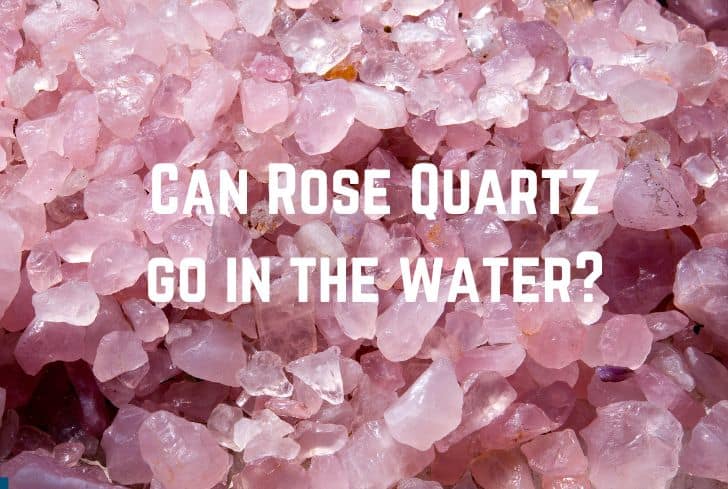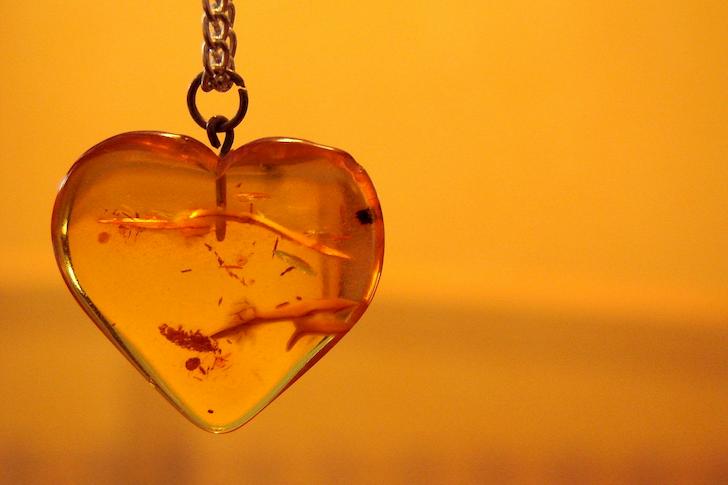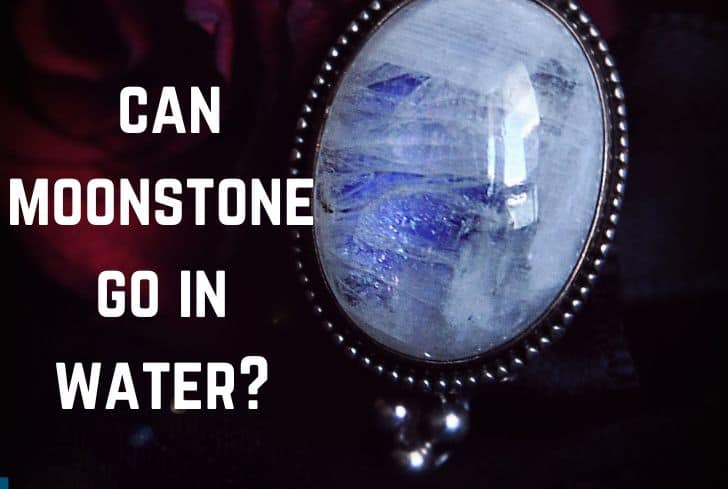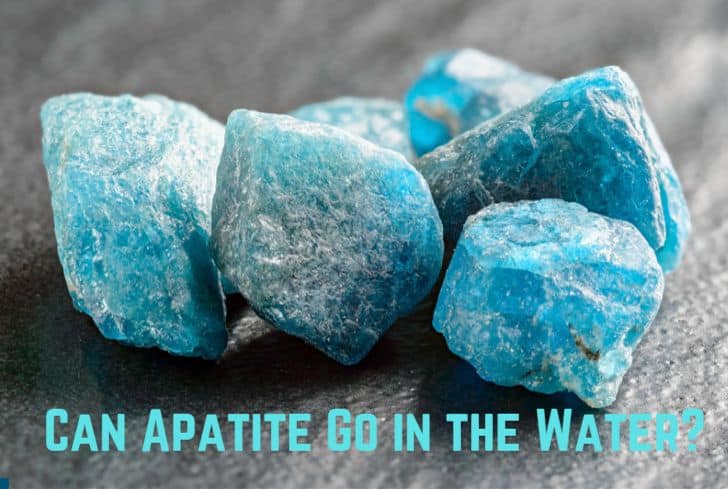Can Unakite go in the Water? (And in Salt?)
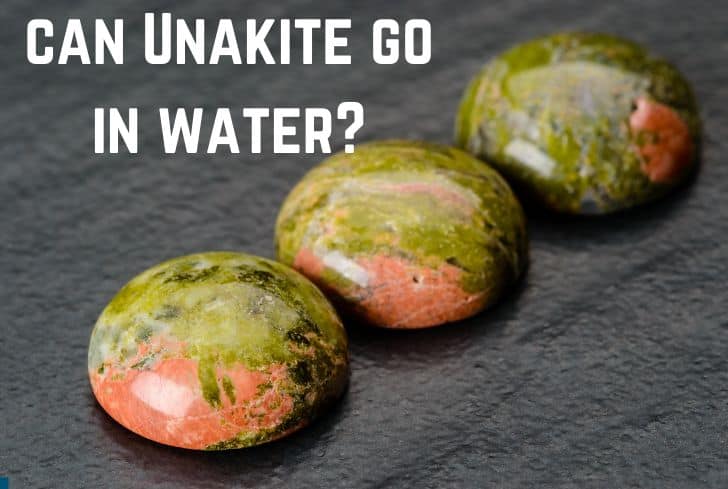
Unakite is an altered granite (igneous rock) made up of three components: green epidote, pink orthoclase feldspar, and colourless quartz. It was first discovered in the Unaka mountain range (from where it got its name) of North Carolina, and it has a variety of uses from jewellery to construction.
Have you ever wondered if Unakite can go in the water? In this article, we are going to discuss just that. We will talk about the properties and uses of Unakite. Then we will look at its interaction with salt and sunlight. Finally, we will learn about taking care of Unakite.
Can Unakite Get Wet?
Yes, Unakite can get wet. It has a value of 6-7 on the Mohs Hardness Scale, which is above the minimum value of 5.0, required for minerals to survive underwater. However, like all minerals, it should not be immersed for too long as the water can dull its surface or damage its structure.
Mohs Hardness Scale is a relative measure of a mineral’s resistance to scratching. Besides that, it also indicates a mineral’s relationship to water. Generally, a value above 5.0 on the scale means that the mineral is safe underwater.
Since Unakite’s hardness is above 5.0, it can be put into water. However, prolonged exposure to water is always dangerous for minerals. Water seeps into the cracks of stones and widens them. These may not be visible at first but can slowly damage the structure of the stone
Water also tends to dull the color of the stone. Some stones are polished, and water can strip off that polish, fading the lustre of the stone.
What are the Properties of Unakite?
These are the properties of Unakite:
- Appearance: Unakite has a unique mottled green or pink appearance with veining of black, grey, or white color. It is opaque and has a vitreous lustre. The mixture of colors is because of the different components of Unakite: the epidote is green, the quartz ranges from white to grey, and the feldspar is pink.
- Hardness: Unakite has a value of 6-7 on the Mohs Hardness scale. This means that it is moderately resistant to scratches and can survive underwater. Because of its moderate hardness, Unakite is used only for jewelry pieces that do not go through a lot of wear and tear.
- Structure: Unakite is made up of granite that has been altered by hydrothermal metamorphism. During this alteration, the granite’s plagioclase is replaced by epidote, leading to a rock made up of pink orthoclase, green epidote, and clear to milky quartz. Unakite has an uneven fracture and no cleavage.
Unakite occurs in rocks of convergent plate boundaries, where igneous intrusions bring hydrothermal fluids that alter the granite. Blue Ridge, Virginia is popular for Unakite mining, and the stone is also found in South Africa, Brazil, and China.
What are the Uses of Unakite?
Unakite has a large number of uses. These include:
- Gems & Jewellery: Because of its beautiful look, Unakite is used to create beads, cabochons, pendants, etc. It is rarely used in fine jewelry, but it is a popular choice in lapidary and craft jewelry. Because of its hardness of 6-7 on the Mohs Scale, it is not used in jewelry pieces like bracelets or rings because they face a lot of wear and tear. These stones can break even with moderate impact.
- Architecture: Unakite serves as a decorative and architectural stone. Smithsonian National Museum of Natural History in Washington, D.C uses Unakite in its floor tiles and as a trimming to the front steps. Unakite can be cut into facing stone, window sills, ashlars etc.
- Construction: Unakite is also used as a construction aggregate (elements that add strength to composite materials like concrete). It is often crushed into stones, which are then used to create road bases, drainage stones, road surfacing, etc.
Besides these, Unakite is also used to create sculptures, vases, desk sets, etc. It is also made into tumbled stones, with the mix of Unakite’s colors making it an attractive piece.
Like many crystals,Unakite is also valued for spiritual reasons. It is believed that Unakite is a stone of vision, which opens the third eye. It is considered a stone of balance, which harmonizes emotions with spirituality.
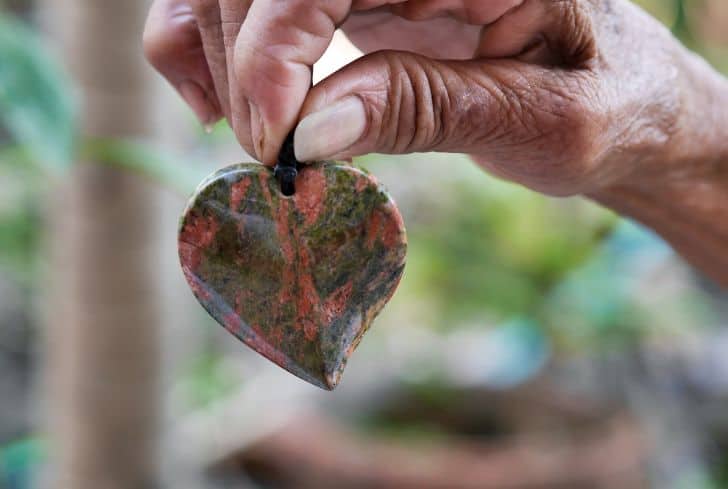
Can Unakite go in Salt?
Yes, Unakite can go in salt. With a hardness of 6-7 on the Mohs Scale, it is a moderately hard mineral which is safe in dry salt. Keeping stones in a bed of dry salt is a common way of recharging them. However, like most minerals, Unakite should never be immersed in salt water.
Immersing minerals in salt water is not safe because, with the help of water, salt can enter the crevices of the stone. The particles remain there even after the water evaporates, and they widen the cracks of the stone. These fissures, over time, can damage the structure of the stone.
However, without water, dry salt cannot harm the stone. It can only come in contact with the surface of the mineral, and since Unakite’s hardness is 6-7, the salt particles will not be able to harm or scratch it in any way.
But some people argue against putting minerals in dry salt. They argue that the stone can accumulate salt over repeated exposures. This salt can eventually come into contact with water or moisture, and it might find its way into the crevices of the stone, where it can cause damage.
However, the probability of something like this is rather low. Keeping stones in dry salt is a popular way of recharging them, and it should not hurt your Unakite stone.
Can Unakite go in Himalayan Salt?
Yes, Unakite can be put in Himalayan Salt. With a hardness of 6-7 on the Mohs Scale, Unakite is a moderately hard mineral, and it cannot be easily harmed by other solids. Putting Unakite in the salt of any kind should not be a problem, although it should never be immersed in salt water.
Himalayan salt is rock salt (halite) mined from the Punjab region of Pakistan, and it has a pinkish tint due to its trace minerals. It is commonly used as a replacement for refined table salt, and also has uses in food presentation, decorative items, and spa treatments.
Halite has a value of 2-2.5 on the Mohs Hardness Scale. This is significantly lower than the hardness of Unakite, which is 6-7. So, upon surface contact, Himalayan salt cannot harm Unakite in any way.
Still, it’s better not to keep your stones in salt for too long, as it just gives more opportunity for the particles to penetrate the crevices. A few hours are enough to recharge a stone in salt.
Can Unakite go in the Sun?
Yes, Unakite can go in the sun. With a hardness of 6-7 on the Mohs Scale, Unakite is a considerably hard mineral, and besides being safe underwater, it is also safe in the sun. However, it should not be left out for too long as sunlight can tarnish or damage it.
Soft stones like opal and calcite will lose their colors when left for too long in sunlight. Some stones can even get brittle or crack. So, even though recharging stones in sunlight is a popular method, it should always be done for a limited time.
Do not leave your stone out for more than a few hours. It’s better to leave it out during the morning hours when the sunlight is gentle. You can also keep the stone behind a window, and the glass will protect it from UV rays.
Can Unakite go in Salt Water?
No, Unakite should not be put into salt water. Unakite is safe enough to go in the water, given its hardness of 6-7, but it should still not be immersed for too long. When salt is added to water, the solution becomes even more corrosive, and it can severely damage the stone.
With the help of water, salt can enter the crevices of the stone and can widen them. These fissures can expand over time and damage the structure of the stone. Prolonged exposure to water also tends to fade the color of the stones.
Lastly, salt water also hastens the rusting process. So, it is especially dangerous for minerals that contain iron. In general, all stones should be kept away from salt water.
How to Cleanse Unakite?
Since the value of Unakite is above 5.0 on the Mohs scale, it can be immersed in water. So, taking this into account, our cleaning method would be as follows:
- Mix a mild detergent or soap with warm water.
- Immerse the stone into the solution for a few minutes, and clean the crevices with a soft brush.
- Rinse the stone under running water, ensuring that all excess soap is removed.
- Let the stone air dry.
You should not use extremely hot water or household chemicals for Unakite. Ultrasonic cleaners are also not recommended.
Conclusion
In this article, we have discussed Unakite’s interaction with water. Since its hardness is 6-7 on the Mohs Scale, Unakite is safe underwater, but it should not be immersed for too long. We looked at the properties and uses of Unakite. Then we talked about its relationship with salt and sunlight. Finally, we discussed how to clean Unakite.

